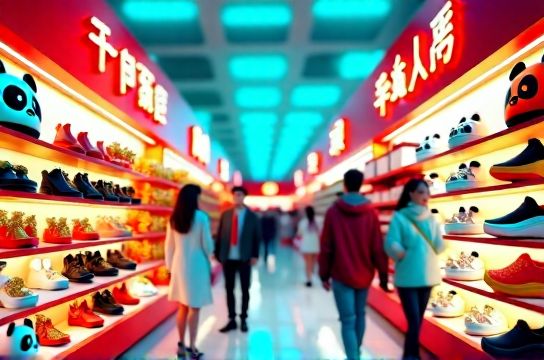What Makes a Chinese Product 'Weird' to Western Audiences?
- 时间:
- 浏览:40
- 来源:OrientDeck
If you've ever scrolled through AliExpress at 2 a.m., you've probably seen it: a USB-powered spaghetti fork, a cat-themed toilet seat cover, or maybe even edible bird's nest in a can. To many Westerners, some Chinese products seem delightfully bizarre — equal parts genius and WTF. But what actually makes these items feel so weird? Spoiler: it’s not that they’re strange — it’s that they reflect a completely different cultural mindset.

The Innovation Gap (or Is It?)
China is home to over 1.4 billion people, with rapidly evolving urban lifestyles and intense competition in e-commerce. This drives manufacturers to innovate — but not always in ways the West expects. While Western design often values minimalism (think Apple), Chinese consumers often appreciate multifunctionality and novelty. A product isn’t weird if it solves three problems at once — it’s smart!
Take the infamous USB rechargeable heated jacket. In colder Chinese cities like Harbin, where indoor heating isn't universal, wearable warmth tech makes sense. But in the U.S., where central heating dominates, it just seems excessive. Context is everything.
Cultural Taste & Symbolism
Symbols carry different meanings across cultures. For example, the number 8 is lucky in China (sounds like “prosper”), while 4 is avoided (sounds like “death”). You’ll see this in product pricing and model numbers:
| Product Type | Common Model Number | Cultural Reason |
|---|---|---|
| Smartphones | Honor 8, Xiaomi 14 | Luck and modernity |
| Kitchen Scales | Model 88 | Doubled luck |
| Avoided Numbers | No Model 4 or 44 | Negative connotation |
Also, packaging matters. Bright red, gold, and dragons? That’s festive in China. In the West, it might scream 'cheap novelty.' But it’s not bad design — it’s culturally targeted design.
Function Over Form? Not Exactly.
Western audiences often critique Chinese products as 'ugly' or 'over-the-top.' But look closer: many prioritize utility. Consider the electric foot bath with massage jets and herbal infusion. In traditional Chinese medicine, foot care is preventative health. So why not add heat, bubbles, and a tea bag dispenser?
Meanwhile, Amazon Basics sells a plain plastic tub for $12. Same function? Technically. Same experience? Not even close.
The Role of E-Commerce & Fast Iteration
Platforms like Taobao and Pinduoduo thrive on rapid prototyping. If a garlic-peeling back scratcher sells 50 units, someone will make 10 variants by next week. This leads to wild experimentation — and yes, some flops. But it also fuels innovation.
In contrast, Western companies often require months of market research before launch. By then, China’s already moved on to the next quirky hit — like instant coffee with collagen, because why not boost your skin while waking up?
So… Are They Actually Weird?
Not really. What feels 'weird' is just unfamiliarity. A 'kissable' robot mouth pillow isn’t strange if you value kawaii (cute) culture. And yes, some products are made purely for viral clicks — but that happens everywhere.
The real takeaway? Instead of judging, try understanding. Behind every odd gadget is a story about lifestyle, belief, or clever problem-solving. Next time you see something wild on TikTok Shop, don’t laugh — ask: Who is this for, and why does it make sense to them?